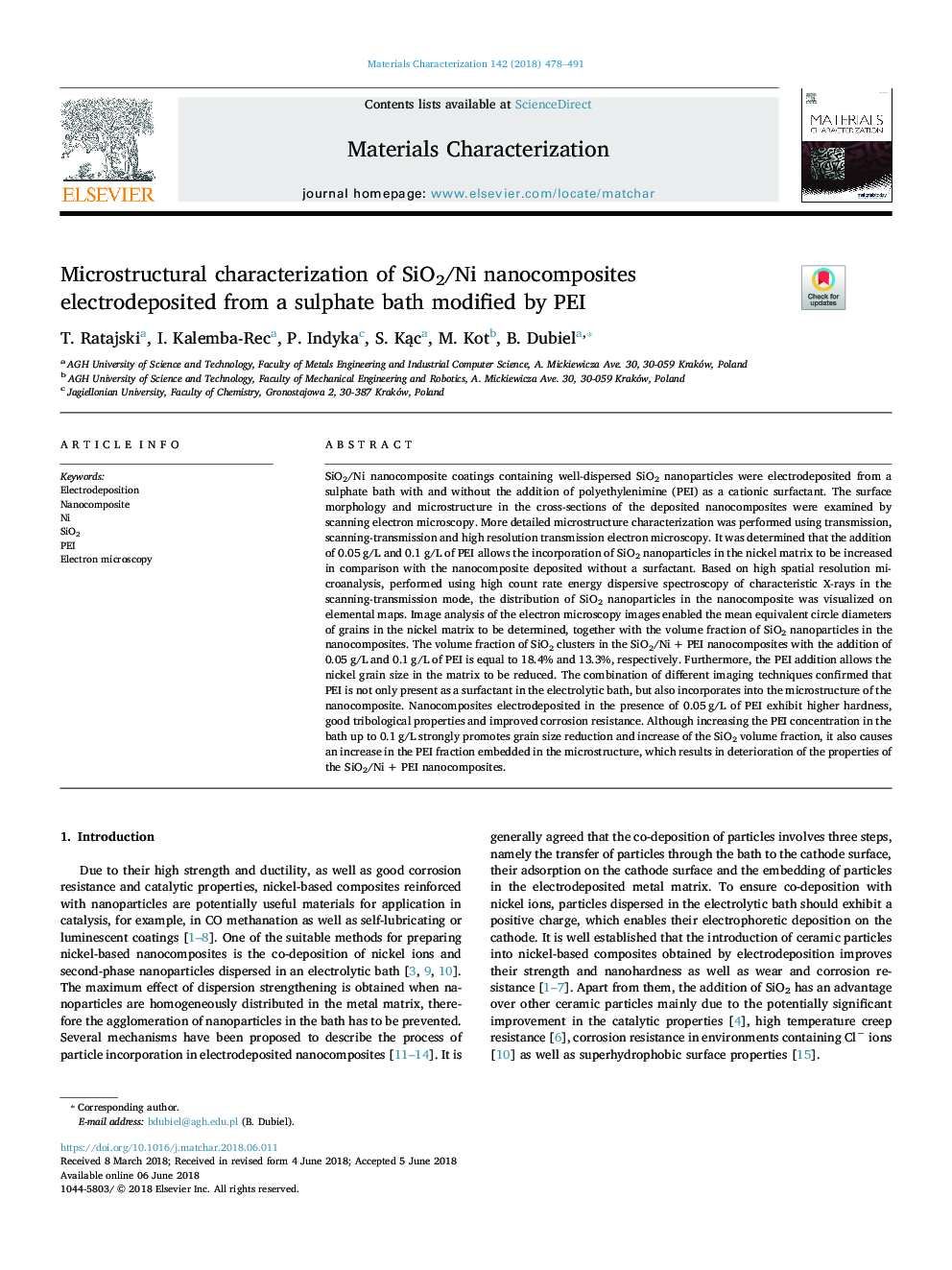| Article ID | Journal | Published Year | Pages | File Type |
|---|---|---|---|---|
| 7969111 | Materials Characterization | 2018 | 14 Pages |
Abstract
SiO2/Ni nanocomposite coatings containing well-dispersed SiO2 nanoparticles were electrodeposited from a sulphate bath with and without the addition of polyethylenimine (PEI) as a cationic surfactant. The surface morphology and microstructure in the cross-sections of the deposited nanocomposites were examined by scanning electron microscopy. More detailed microstructure characterization was performed using transmission, scanning-transmission and high resolution transmission electron microscopy. It was determined that the addition of 0.05â¯g/L and 0.1â¯g/L of PEI allows the incorporation of SiO2 nanoparticles in the nickel matrix to be increased in comparison with the nanocomposite deposited without a surfactant. Based on high spatial resolution microanalysis, performed using high count rate energy dispersive spectroscopy of characteristic X-rays in the scanning-transmission mode, the distribution of SiO2 nanoparticles in the nanocomposite was visualized on elemental maps. Image analysis of the electron microscopy images enabled the mean equivalent circle diameters of grains in the nickel matrix to be determined, together with the volume fraction of SiO2 nanoparticles in the nanocomposites. The volume fraction of SiO2 clusters in the SiO2/Niâ¯+â¯PEI nanocomposites with the addition of 0.05â¯g/L and 0.1â¯g/L of PEI is equal to 18.4% and 13.3%, respectively. Furthermore, the PEI addition allows the nickel grain size in the matrix to be reduced. The combination of different imaging techniques confirmed that PEI is not only present as a surfactant in the electrolytic bath, but also incorporates into the microstructure of the nanocomposite. Nanocomposites electrodeposited in the presence of 0.05â¯g/L of PEI exhibit higher hardness, good tribological properties and improved corrosion resistance. Although increasing the PEI concentration in the bath up to 0.1â¯g/L strongly promotes grain size reduction and increase of the SiO2 volume fraction, it also causes an increase in the PEI fraction embedded in the microstructure, which results in deterioration of the properties of the SiO2/Niâ¯+â¯PEI nanocomposites.
Related Topics
Physical Sciences and Engineering
Materials Science
Materials Science (General)
Authors
T. Ratajski, I. Kalemba-Rec, P. Indyka, S. KÄ
c, M. Kot, B. Dubiel,
